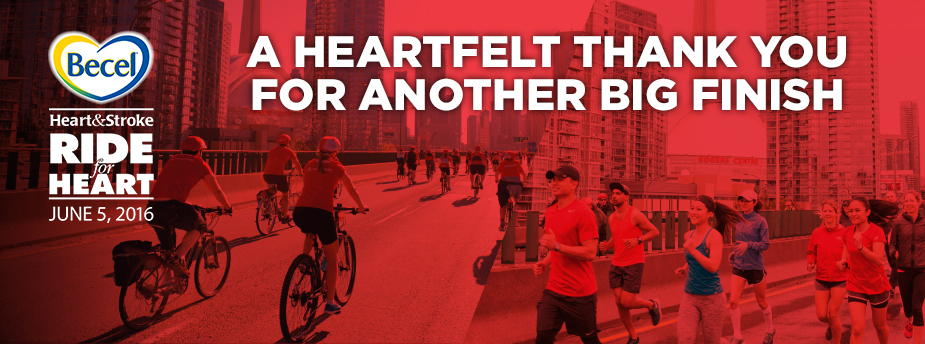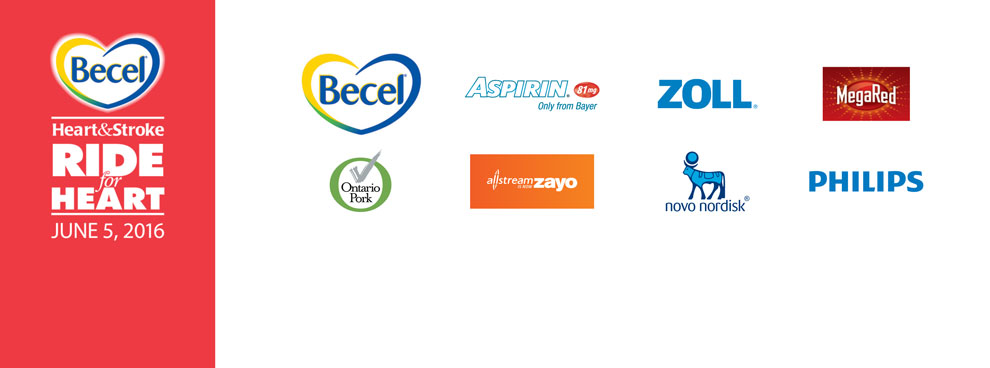Fundraising 101
We won’t deny that fundraising is a crowded field these days, but we won’t dwell on it either. You’re participating in the Ride for Heart because you care about creating more survivors of heart disease and stroke. That passion will be enough to drive you beyond the challenges to fundraising success! But we want to help, so here are some tried and tested tips and strategies:
- Start by asking close friends and family who won’t say no
- Be specific in your donation requests - don’t be vague!
- Break your fundraising goal up into small “bite” sizes and ask each donor to contribute that amount.
The Participant Centre can help with this.
Login and use the email tool to upload contacts, send emails (templates or create-your-own), and send thank you notes.
The common tendency is to "go big" and blast your whole network with a request. That's good advice, and there will be a time for that. But you don't have to start there.
Try starting small with a strong base. Choose 5-10 close family and friends you can reach out to right away. These are people who won’t say no: your partners, family members, closest friends, anyone who owes you a favor, or anyone you recently supported with a donation.
Now here's the key: be specific in your request. Ask each person for what you know they can give. If you have a friend who is capable of giving $100, don't ask them for $20! Refrain from asking for a vague gift amount - ask them for "$100 to help me create more survivors of heart disease and stroke." If someone is only able to give $10, ask them for $10.
They will feel good knowing they can give you what you asked for, and every little bit will move you closer to your goal.
If you can find 5 people who can donate $20 each, you've just reached the fundraising minimum! So before you go big, start small: think of the people who you know will help you, and how they can help you with, and build momentum on that.
Expand
- A self-donation is a chance to set the tone for your fundraising
- You can ask donors to "match" your gift amount
- A gift to yourself is another step toward creating more survivors
Make a self-donation (you must be logged out of the Participant Center when donating to yourself online)
We aren't nickel-and-diming you when we encourage you to make a gift to your own campaign, we promise!
Making a self-donation is as much about helping yourself as it is about helping the Heart & Stroke Foundation. Fundraisers who make a gift to themselves set the tone for the kind of fundraising they want to do. Donors are likely to make a donation of a size similar to yours. You can use the self-donation as a fundraising strategy by asking friends and family to "match" your gift amount.
Show your network that you believe in what you’re doing! Be good to yourself with a self-donation.
Expand
- The steps above will all get you to your goal and beyond. The steps below will really round out the whole experience even setting the foundation for future fundraising.
- Say thank you! This should be a given. If you want your donors to consider giving next year, send a thank you note or give them a phone call.
- Avoid burn out. Think long-term! If you use the “start-small” strategy, you might be able to achieve your goal without utilizing your whole network. Then you can "reserve" some of those resources for future fundraising. Consider dividing your network into rotations asking one half for support in one year, then asking the second half for support the following year.
- Return favors. The unspoken rule of peer-to-peer fundraising: I’ll scratch your back if you scratch mine. If a donor requests a favor or a donation after they support you, it’s only good manners to come through. Otherwise you can say good bye to that donor next year.














